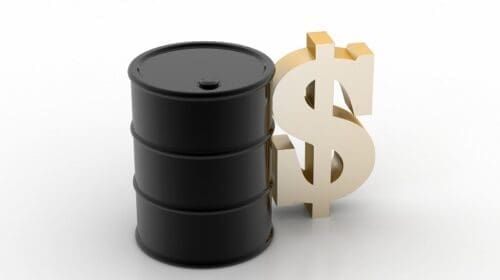Crude oil prices have weakened since 2022 but remain relatively strong, which enhances cash flow as production in the U.S. sets records.
The West Texas Intermediate (WTI) crude oil price averaged $75.96 per barrel in the first quarter of 2023, a 20% ($19.21) decrease compared with the first quarter of 2022 and an 8% ($6.72) decrease compared with the fourth quarter of 2022.
Higher production resulted in cash from operations increasing by 13% ($3.0 billion) compared with the first quarter of 2022. Oil production nationwide has increased by 1 million barrels per day in April (12.6 million barrels per day) compared to April 2022 (11.6 million barrels per day).
Capital expenditure in the first quarter of 2023 increased 26% ($3.5 billion) compared with the first quarter of 2022 to $16.7 billion and increased 12% ($1.8 billion) compared with the fourth quarter of 2022. Higher capital expenditure supported production, increasing 9% (338,000 b/d) in the first quarter of 2023 from the first quarter of 2022 and 1% (59,000 b/d) from the fourth quarter of 2022.
Also, capital expenditures as a share of cash from operations increased to 64%, the highest percentage since the beginning of the pandemic. This share remains below the quarterly average of 104% in the period before the pandemic (2018–19). Historically, the ratio of capital expenditure to cash from operations has been greater than 100%, reflecting the capital-intensive nature of E&P as well as the need for outside sources of capital to fund drilling projects.
Production expenses, reflecting the cost of goods sold, operating expenses, and production taxes, declined 14% from the fourth quarter of 2022 to $27.19 per barrel of oil equivalent (BOE) in the first quarter of 2023. Compared with 2Q22, production expenses have decreased by 28%.
Debt reduction, which the E&P companies allocated $39.7 billion toward between the fourth quarter of 2020 and the third quarter of 2022, has reduced long-term debt 30% below the 2018–19 average.
Shareholder returns, in the form of share repurchases and dividends, accounted for the remainder of the uses of cash in the quarter. Shareholder distributions decreased 32% from the fourth quarter to $11.8 billion in the first quarter of 2023 but remained elevated as a share of cash from operations. Net share repurchases decreased 45% from the fourth quarter of 2022 to $5.5 billion, and dividends decreased 16% to $6.3 billion.
The cost of goods sold, which includes the cost of materials and labor directly used in production, has been the main driver of production cost increases because of supply chain constraints in 2022. Although the cost of goods sold has declined by 39% from 2Q22 to $13.80/BOE in 1Q23, it remains 62% ($5.26/BOE) above the 2018–19 average of $8.54/BOE.
Alex Mills is the former President of the Texas Alliance of Energy Producers
Alex Mills is the former President of the Texas Alliance of Energy Producers. The Alliance is the largest state oil and gas associations in the nation with more than 3,000 members in 305 cities and 28 states.
Oil and gas operations are commonly found in remote locations far from company headquarters. Now, it's possible to monitor pump operations, collate and analyze seismic data, and track employees around the world from almost anywhere. Whether employees are in the office or in the field, the internet and related applications enable a greater multidirectional flow of information – and control – than ever before.




















